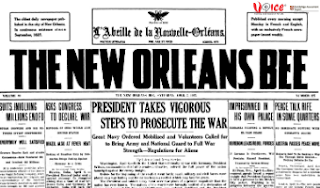Stylistic Techniques Used For Writing - Voiceskills
Writing is a craft. Skilled writers incorporate stylistic techniques into their writing for rhetorical effect. In other words, stylistic techniques enhance a piece of writing’s aesthetic, emotional or intellectual appeal. Certainly, the content of a text is important, but a writer who can organize his ideas in a unique and provocative way can increase his/her writing’s allure.
Varied
Sentence Structure
English
allows for four main sentence constructions: simple, compound, complex and
compound-complex, and skilled writers use all of these. Using too many simple
sentences in a row sounds monotonous. A simple sentence consists of one subject
and one verb, as in “She laughed.” The other sentence constructions incorporate
more subject-verb patterns.
Conciseness
No
matter the genre, whether poetry or essay writing, skilled writers aim for
conciseness. Conciseness in writing means eliminating any unnecessary words.
Writing all sentences in active voice, where the subject precedes the object,
helps achieve this goal. Paring down prepositional phrases, such as “with
regard to,” which writers can replace with the briefer “regarding,” tightens
writing.
Transitional
Phrases
Transitional
phrases include “however,” “in addition” and “on the other hand.” These phrases
link ideas in sentences to create coherence between them. Like signposts, they
guide readers along from one idea to another. Without transitional phrases,
readers struggle to make connections between ideas and the writing sounds
choppy.
Figurative
Devices
Writers
can use their imaginations to express ideas through figurative devices.
Figurative devices, such as metaphor, simile, irony and hyperbole, make unusual
comparisons for dramatic effect. For example, a political advertisement that
reads “The current leader is gouging you with taxes” utilizes both metaphor --
unusual comparison -- and hyperbole -- exaggeration -- by comparing taxation to
excessive digging.
Poetic
Devices
Poetic
devices create interesting effects for readers by playing on the sound patterns
of words. Alliteration, the repetition of the first letters of words, can
create a soothing effect, as in “softly slumbered,” or a harsh one, as in “the
clattering and clanking of the cogs.” Children’s literature writers often use
onomatopoeia, words that sound like the noises they make, such as “whoosh” or
“buzz.”
Unusual
Stylistic Techniques
For
creative writers, the sky’s the limit in terms of stylistic techniques. Fiction
writers can even use sentence fragments, technically grammatical erroneous, for
dramatic effect: “No. It couldn’t be. No way.” Double voice, a technique that
involves interspersing dialogues or thoughts of two different people, is also
appropriate for fictional writing: "He watched them take her away, all the
time sinking inside," "It shouldn’t have been this way. I shouldn’t
have let her do it," and "But all he could do was watch."


Comments
Post a Comment